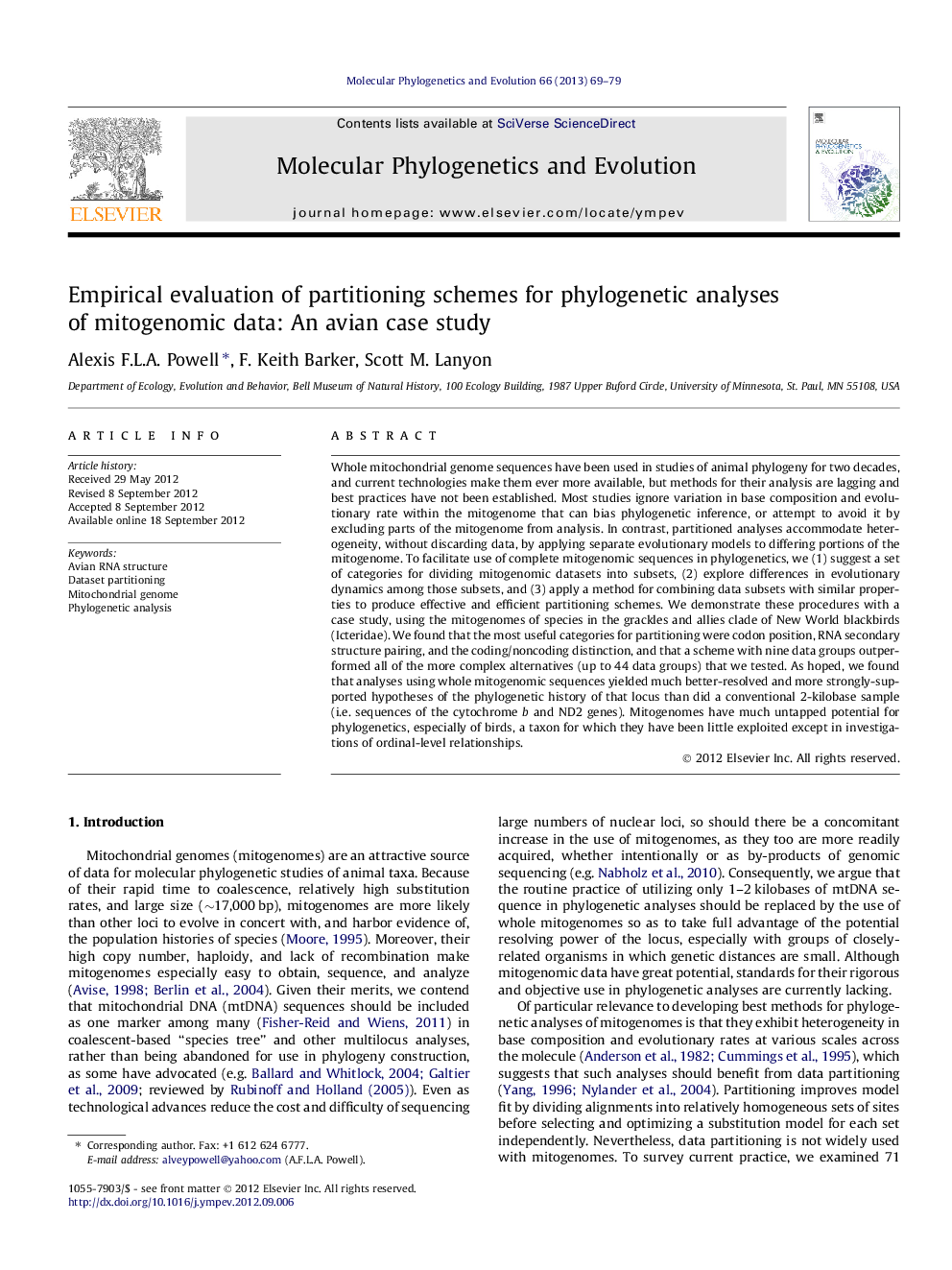| کد مقاله | کد نشریه | سال انتشار | مقاله انگلیسی | نسخه تمام متن |
|---|---|---|---|---|
| 5919979 | 1164278 | 2013 | 11 صفحه PDF | دانلود رایگان |
Whole mitochondrial genome sequences have been used in studies of animal phylogeny for two decades, and current technologies make them ever more available, but methods for their analysis are lagging and best practices have not been established. Most studies ignore variation in base composition and evolutionary rate within the mitogenome that can bias phylogenetic inference, or attempt to avoid it by excluding parts of the mitogenome from analysis. In contrast, partitioned analyses accommodate heterogeneity, without discarding data, by applying separate evolutionary models to differing portions of the mitogenome. To facilitate use of complete mitogenomic sequences in phylogenetics, we (1) suggest a set of categories for dividing mitogenomic datasets into subsets, (2) explore differences in evolutionary dynamics among those subsets, and (3) apply a method for combining data subsets with similar properties to produce effective and efficient partitioning schemes. We demonstrate these procedures with a case study, using the mitogenomes of species in the grackles and allies clade of New World blackbirds (Icteridae). We found that the most useful categories for partitioning were codon position, RNA secondary structure pairing, and the coding/noncoding distinction, and that a scheme with nine data groups outperformed all of the more complex alternatives (up to 44 data groups) that we tested. As hoped, we found that analyses using whole mitogenomic sequences yielded much better-resolved and more strongly-supported hypotheses of the phylogenetic history of that locus than did a conventional 2-kilobase sample (i.e. sequences of the cytochrome b and ND2 genes). Mitogenomes have much untapped potential for phylogenetics, especially of birds, a taxon for which they have been little exploited except in investigations of ordinal-level relationships.
Highlights⺠We evaluated methods of partitioning whole mitogenomes for phylogenetic analyses. ⺠Commonly used schemes for partitioning mitogenomic data lack explicit justification. ⺠Optimally partitioning animal mitogenomic datasets requires at least six data subgroups. ⺠Complete mitogenome datasets yield better resolved phylogenies than smaller samples.
Journal: Molecular Phylogenetics and Evolution - Volume 66, Issue 1, January 2013, Pages 69-79
